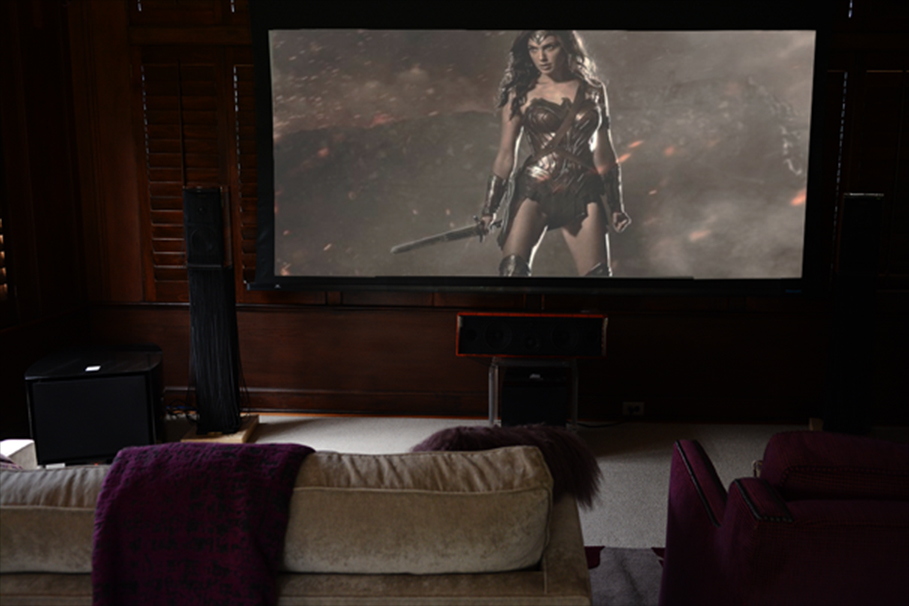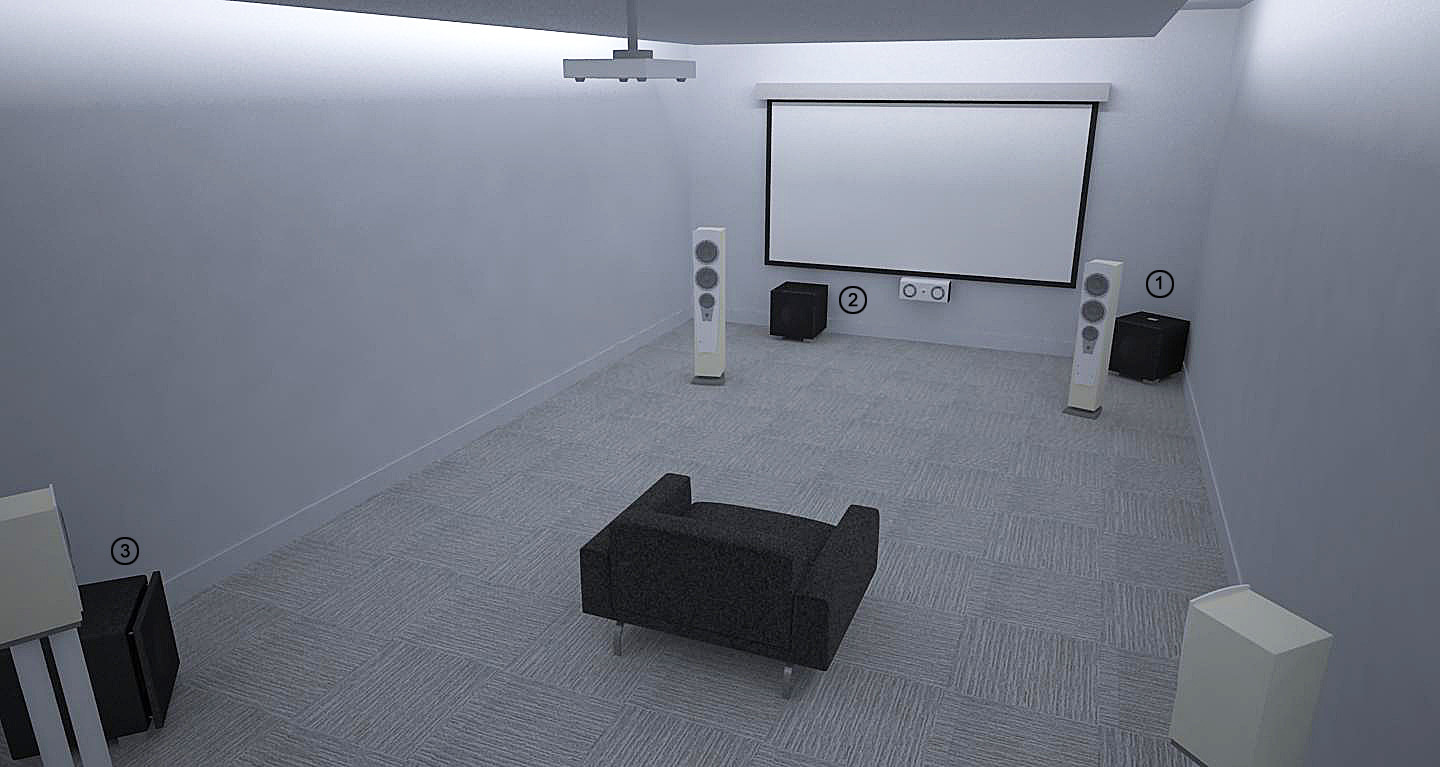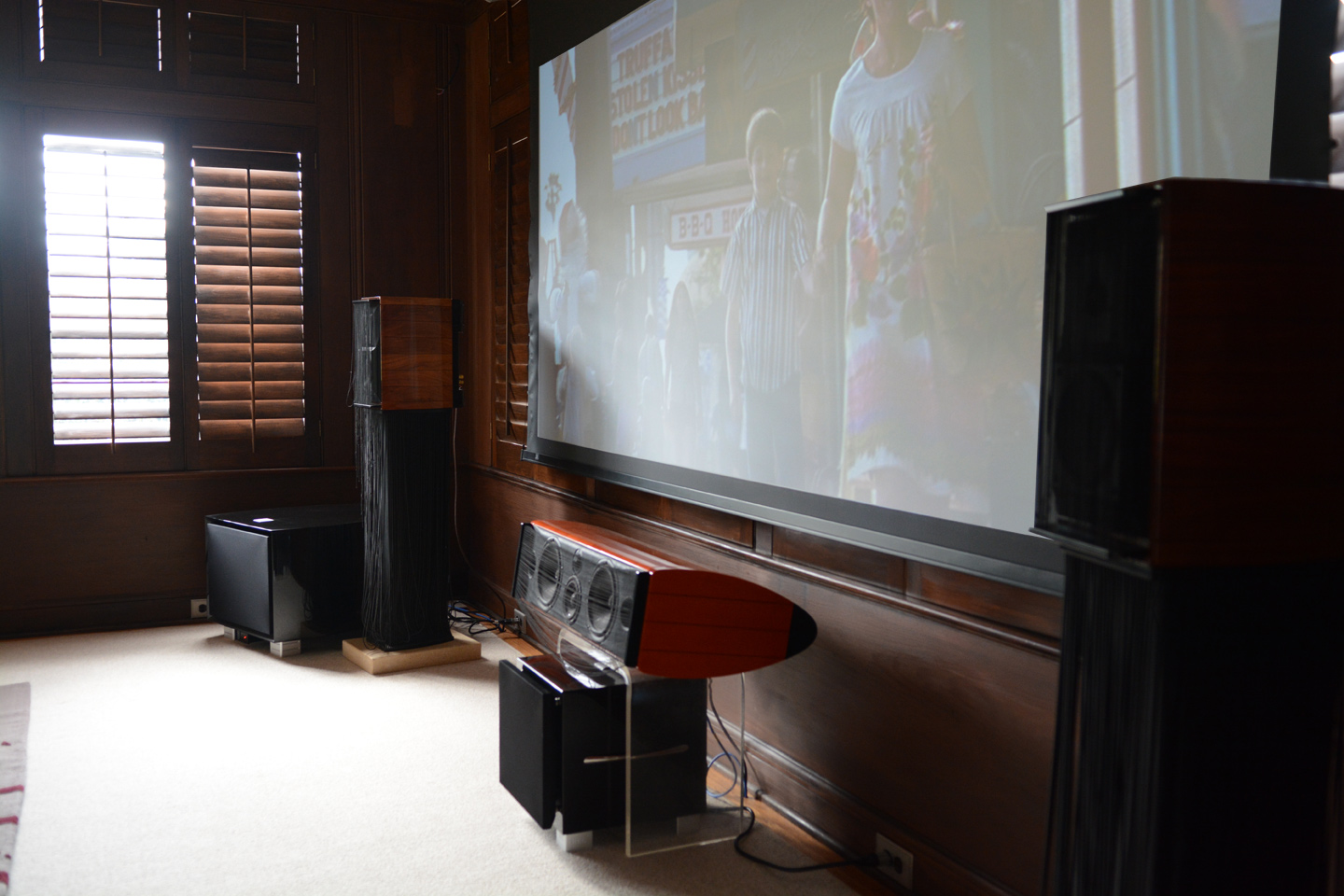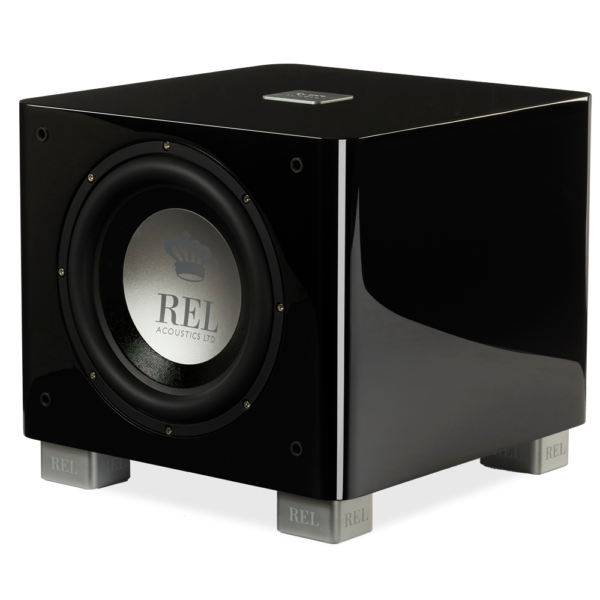Blog
Dive Real Deep into REL 3D
Home Theater Principles for Dolby Digital and THX
 So, we’re diving into the deep end of the pool with a REL 3-D Theater system. Why? Because it allows us to lay out a number of basic principles that operate quite differently from the somewhat dumbed down approach that mid-fi uses to approach home theater. We build systems based largely on what a professional transfer studio or screening room would use, meaning using a best practices approach rather than a lowest common denominator approach. Do not, for a moment, presume that this requires driving the cost of building a great home theater crazy. This blog is dedicated to those enthusiasts looking to obtain the highest level of sound quality from their theaters—with a deliberate bias toward being able to maintain high quality, full range, music reproduction as a priority, as well as create theaters that are capable of far more than simply the large-scale bombastic and obvious approach that dominates our industry (although we can bombast with the best of them!).
So, we’re diving into the deep end of the pool with a REL 3-D Theater system. Why? Because it allows us to lay out a number of basic principles that operate quite differently from the somewhat dumbed down approach that mid-fi uses to approach home theater. We build systems based largely on what a professional transfer studio or screening room would use, meaning using a best practices approach rather than a lowest common denominator approach. Do not, for a moment, presume that this requires driving the cost of building a great home theater crazy. This blog is dedicated to those enthusiasts looking to obtain the highest level of sound quality from their theaters—with a deliberate bias toward being able to maintain high quality, full range, music reproduction as a priority, as well as create theaters that are capable of far more than simply the large-scale bombastic and obvious approach that dominates our industry (although we can bombast with the best of them!).
After we get through building out the paradigm, we’ll scale back and look at simpler versions of theater constructs. Here we go.
The Goal: Systems that can do both theater AND music well tend to be capable of accurately rendering all manner of vocal timbres correctly (necessary for intelligibility in theater and music) accurately scaling dynamics in a natural manner—again, necessary for both genres and generally are capable of long term enjoyment that means that at the end of watching a 2 hour movie the audience isn’t drained from having been sonically pummeled for 2 hours but having been thrilled, moved, emotionally affected appropriately for scene after scene.
 REL 3D: Dolby is a brilliant company, arguably the smartest of all; over a more than 50 year history they authored hundreds of patents. When they created Dolby 5.1 it was an outgrowth of Dolby’s Spectral™ patent developed for professional theater applications. Marketed as Dolby Digital (DD) it debuted in the 1994 movie Speed; within 1 year three major studios had announced that all future releases would be DD-only, a tradition that carries on to this day. The consumer version (DD AC-3) called for 5 independent channels with a bandwidth of 20Hz-20,000Hz with a Low Frequency (Special) Effects channel with a bandwidth of 20-120Hz. Later, the frequency range was expanded to include frequencies as low as 3 Hz, although the merits of attempting to deliver frequencies this low in a home environment are debatable. REL 3D is the simplest, most cost effective method we could devise to meet the Dolby criterion for 5.1 and subsequent evolutions of it at the lowest price.
REL 3D: Dolby is a brilliant company, arguably the smartest of all; over a more than 50 year history they authored hundreds of patents. When they created Dolby 5.1 it was an outgrowth of Dolby’s Spectral™ patent developed for professional theater applications. Marketed as Dolby Digital (DD) it debuted in the 1994 movie Speed; within 1 year three major studios had announced that all future releases would be DD-only, a tradition that carries on to this day. The consumer version (DD AC-3) called for 5 independent channels with a bandwidth of 20Hz-20,000Hz with a Low Frequency (Special) Effects channel with a bandwidth of 20-120Hz. Later, the frequency range was expanded to include frequencies as low as 3 Hz, although the merits of attempting to deliver frequencies this low in a home environment are debatable. REL 3D is the simplest, most cost effective method we could devise to meet the Dolby criterion for 5.1 and subsequent evolutions of it at the lowest price.
Full Disclosure: For our purposes, we allowed the low frequency standard to float in order to fit the system and customer’s expectations. Even in the world of expensive subwoofers, true 20 Hz in room response is rare (please don’t write in quoting some mid-fi company’s nonsensical spec of promising sub-15Hz bass at $800. It’s a lie). However, real world usable response between 25 and 32Hz is achievable in the wonderfully accessible T/i range. This means some pretty epic home theater improvements can happen for reasonable investments.
At REL, we took in all this and asked ourselves the basic question; how can we take these daunting standards and deliver the intent of Dolby—true full range sound for all 5 channels + .1/LFE channel (more on this in a moment). Apart from one pair of speakers that at the time of this writing sell for $720,000/pr. we know of no full range speakers capable of flat output to 20 Hz in a real world setting. Back here on planet Earth we arrived at the following as the simplest, most effective way to deliver on the promise of Dolby 5.1/DTS.
It is important to realize that Dolby ALWAYS conceived of the LFE/.1 channel as unnecessary to the story-telling main purpose of a movie and expects the 5 main channels to carry the primary burden of delivering bass from ALL 5 main channels (or 7 or 9).
From Dolby labs:
In order to avoid confusion, a clear distinction is made between a Low Frequency Effects, which may be contained on a separate LFE channel, and the separate radiation derived from the program content at low frequencies reproduced by one or more subwoofers dedicated to this purpose. Although these signals seem to be one and the same, they do not need to be. This confusion about the management of low frequencies causes a large number of problems in practical situations.*
And, from Tomlinson Holman (inventor of Lucasfilm THX sound system):
The LFE channel provides non-essential low frequency content. The reproduction of this channel is not essential to enjoyment of the program… This leads to the most important recommendation: DO NOT RECORD ESSENTIAL STORY-TELLING SOUND CONTENT IN THE LFE CHANNEL.*
Now let’s dive deep into setting up a REL 3D system.
Main Speakers: Through no fault of their own, proper placement of main speakers means that few quality speakers deliver output significantly below 40Hz in room (versus in anechoic chambers that mimic output in free space without the limitations of normal room boundaries). In order to extend that output to be functionally full range (approaching the 20-20kHz ideal), one or more RELs connected High Level or Low Level to a Dolby 5.1 system set to Large in Speaker Set-Up are capable of extending this low frequency limit, in many cases, into the mid-20’s.
 These REL/s will be your Main subs, matching and extending the capabilities of the main speakers. They will generally be the largest, most capable sub(s) in the system. Our featured system uses a single G-1, a powerful, very fast carbon fibre-coned subwoofer capable of keeping up with pretty extreme levels of output.
These REL/s will be your Main subs, matching and extending the capabilities of the main speakers. They will generally be the largest, most capable sub(s) in the system. Our featured system uses a single G-1, a powerful, very fast carbon fibre-coned subwoofer capable of keeping up with pretty extreme levels of output.
Placement Guidance: When possible, select the stiffest, structural corner of the front of your theater if you plan to use 1 sub. In our example, the main G-1 is placed in a corner that has an external wall with a thickness of well over 1’ and is built using solid masonry construction giving excellent launch characteristics to bass transients. Toe-in all RELs toward listening chairs where possible.
Connection: Both High Level and .1/LFE should be connected (if High Level is impossible due to the use of some unusual Calls D main amps or similar issues, please use Low Level Inputs+.1/LFE).
Center Channel: The center channel also carries the requirement to be a full range channel, of course. Generally speaking, we find this to be an area where one of our smaller subs works well—no need to have identical subs at every station. In our featured system, the center channel sub is a model S/2 (recently discontinued, our T/9i at lower cost would provide more than enough performance to actually exceed this performance). This subwoofer may be, and often is placed–for practical for aesthetic reasons– a bit off-axis from the actual center channel speaker.
Hot Tip: It is generally easier and works brilliantly to connect High Level to the rear of the center channel speaker’s terminals. Twist both Red and Yellow leads together to form a single “hot” conductor. Attach the black wire to the black-ground wire on the rear of the speaker or let it float (disconnected) if using Class D amps or Differential.
Placement Guidance: Placed within the center 2/3 of the room on the front wall underneath the screen facing forward. Place using standard REL guidance for voicing placement. Use rhythmic, deep bass program material to best locate for overall performance.
Surround Channel(s): Not only is the surround matrix responsible for creating the vast spaces necessary to sell scale in all sorts of scenes (isn’t it funny that it is sound that is used to convey the empty vastness of deep space? Full marks if you recall that there is no sound transmitted in the perfect vacuum that is space). The Surround Channels are necessarily a full range group of channels (20-20kHz), per Dolby spec. A fairly large REL(s) is needed to properly convey the sense of scale needed to keep up with state of the art surround. This unit should be the second largest model in the REL 3D set-up. If you are a sharp-eyed reader, you will have caught that in our system the owner chose to go with a second S/2. Our guidance would be to replace this model with an S/3.
Placement Guidance: Ideally, place the surround sub in the opposite (from the main sub) diagonal corner. In our example, the main G-1 is in the Left front corner, the rear surround sub is placed-correctly-in the Right rear corner. Again, carefully toed-in is prefer if aesthetic concerns can still be met in doing so.
Note: The most common mistake is using too small a sub-or no sub- for the surround channels. This mistake begins with clients thinking they can skimp on surround channels, aided and abetted by similar advice from mainstream media parroting this same blather.
Hot Tip: Often placement—more specifically running cables—is difficult. We have taken to specifying one of our wireless systems (Arrow for T/i/Longbow for S-SHO and 212SE or No.25) as it obviates running long cables and speeds up the whole process of getting the rear subs placed properly with a minimum of fuss. Specifying one of these—not appropriate in all circumstances—can also be far less costly than running cabling under base boards, down through crawl spaces and etc.
 This, then, outlines the basics of how to develop a system capable of meeting the broad outlines of the Dolby standard allowing for a few Hertz here and there to permit customers of widely varying budgets and room sizes to still participate in the wonderfully captivating world of high end theater in one’s home. In the past 20 years that we have travelled the world teaching, calibrating and demonstrating this approach the most common experience shared with us is that REL’s approach restores the liquid, full range bass common mid-fi based systems strip out and places the theater participant in the midst of a truly 3-dimensional sonic envelope that is highly addictive.
This, then, outlines the basics of how to develop a system capable of meeting the broad outlines of the Dolby standard allowing for a few Hertz here and there to permit customers of widely varying budgets and room sizes to still participate in the wonderfully captivating world of high end theater in one’s home. In the past 20 years that we have travelled the world teaching, calibrating and demonstrating this approach the most common experience shared with us is that REL’s approach restores the liquid, full range bass common mid-fi based systems strip out and places the theater participant in the midst of a truly 3-dimensional sonic envelope that is highly addictive.










